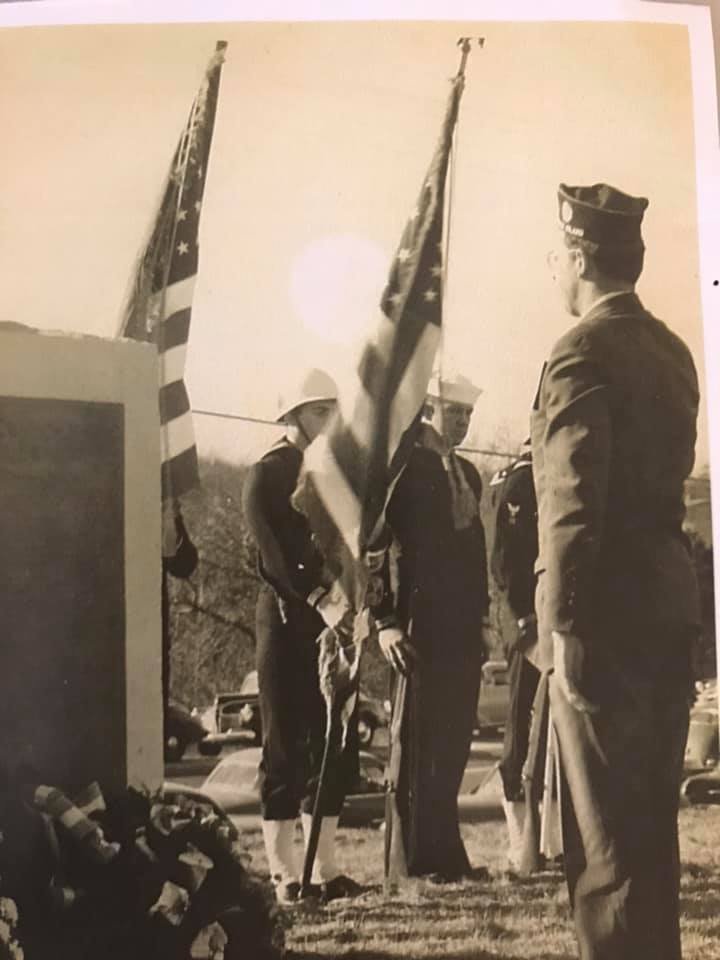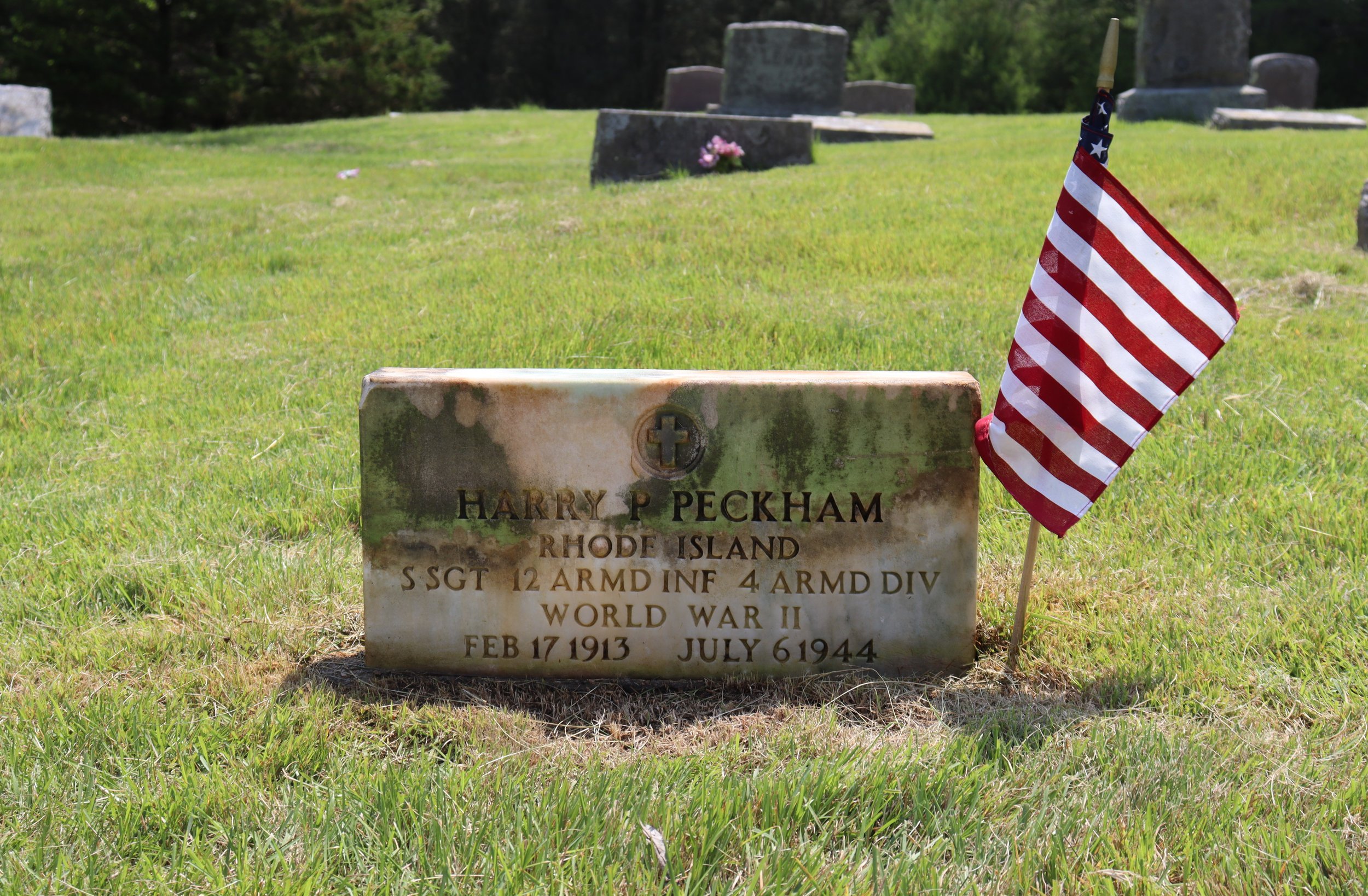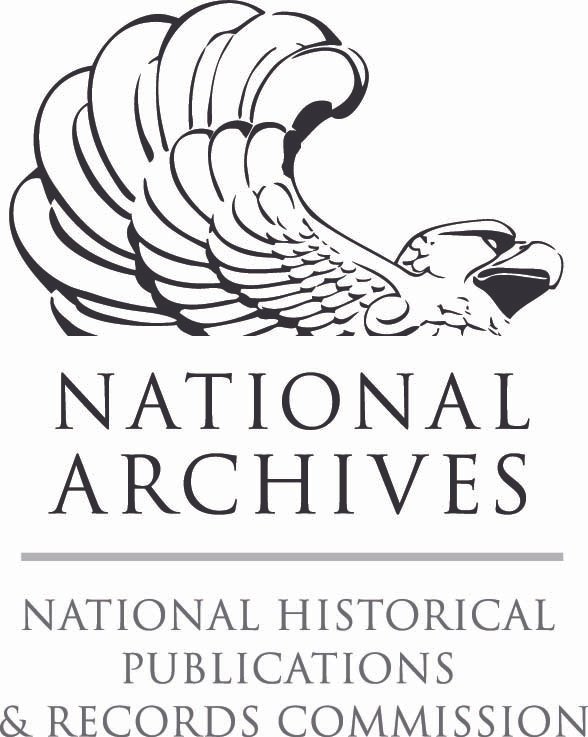From The Archives: Honoring Harry Philip Peckham (1913-1944)
Belonging(s): “A close relationship among a group and personal or public effects
“Asco wequassinummis, neetompooag” (Hello my friends)!
Hello! And welcome to another installment of the From the Archives series where Collections and Archive Manager Anthony Belz shares some of the most interesting items found in the Tomaquag Museum Archive. In this special Memorial Day installment we will be honoring the life and the ultimate sacrifice of Narragansett Tribal citizen, Harry Philip Peckham, the first Narragansett and first resident from Charlestown to be Killed in Action in World War 2.
I strongly believe the most powerful thing about archives, especially the Tomaquag Museum archives and what is truly the underlying basis of the From the Archives Series, is that one little piece of information about an individual, event or location can evoke a number of research questions that lead us toward finding answers in very unexpected places. For this blog post, I have pulled archival and digitized records from The Tomaquag Museum Archives, Charlestown Historical Society, Eastern Nazarene College Archives, Archive.org, Ancestry.com and Find A Grave to share the story of Harry Philip Peckham’s life. These connections and answers thereby allows us to tell stories that have never been told before. In this regard we wish to memorialize Army Staff Sergeant Harry Philip Peckham’s life and honor his ultimate sacrifice for future generations.
Births Registered in Charlestown Rhode Island for year ending December 31, 1913. Harry Philip Peckham is the third birth of the year. Ancestry.com
Harry Philip Peckham was born on February 17, 1913 in Charlestown, Rhode Island, the only son of mother Clara Frances Perry Peckham (1889-1940) and father Philip Harry Peckham (1887-1955) who was also known as Narragansett Chief Sachem Night Hawk. He had two sisters, Mary E. Peckham Cogswell and Clara J. Peckham Addison.
Family of Philip Harry Peckham. Facebook post from Simonds Mauweesemum Sequettass [Kyle Linn Lamphere] (1991-2021). ca. early 1920s. Courtesy of the Charlestown Historical Society.
During the past two years, the Tomaquag Museum Archives, supported by the National Historical Publications and Records Commission, has been intently focused on conducting oral history interviews with Narragansett Tribal Elders to help identify unknown people in our photographic collection. Over the course of at least a dozen different interviews, tribal elders have been identifying the first photograph on the bottom row, far left as “Clara’s brother,” or simply Harry. It wasn’t until I was creating this blog that the Archival Assistant, Kate Cullen-Fry, a Narragansett Tribal Citizen, put the two together and we have finally positively identified the young man in regalia smiling in front of the Narragansett Indian Church in Charlestown as Harry Philip Peckham. A great success not only for the goals and objectives of the grant, but through the power of combined Elder’s memories, we are able to preserve the identity of the person in this photograph and now are able to share with you the only known photograph of Harry Philip Peckham in traditional regalia. The photograph was presumably taken at the Narragansett Tribe’s annual August Meeting sometime in the mid 1930s.
When reviewing this blog post before publication, the Tomaquag’s Executive Director, Lorén Spears, positively identified the young man to the left of Harry Philip Peckham in this photograph is in fact her maternal grandfather, Ferris Babcock Dove (1915-1983), who along with his wife Eleanor Dove (1919-2019) were the proprietors of Dovecrest Restaurant and Trading Post in Exeter, Rhode Island.
Harry Philip Peckham, [Back Left], Ferris Babcock Dove (1915-1983) [Back Right] and two unidentified friends. ca. late 1920s-early 1930s. Courtesy of the Charlestown Historical Society.
Harry Philip Peckham grew up in the rural, close knit community of Charlestown, Rhode Island and he attended Ward Senior High School, Westerly Rhode Island. While at Ward High he excelled in track, winning state championships in both Rhode Island and Connecticut in 1932 and was Captain of the Cross Country team.
Harry Philip Peckham. Ward Senior High School, Westerly Senior Portrait. 1933. From Simonds Mauweesemum Sequettass [Kyle Linn Lamphere] (1991-2021). Courtesy of the Charlestown Historical Society.
After high school, Harry attended the private Christian Eastern Nazarene College in Wollaston, Massachusetts, a neighborhood of Quincy, between September 1935 to June 1938. There, he once again excelled in track, as well as basketball. In addition he played saxophone in the college orchestra.
The Narragansett Dawn. Volume 1 Number 3 June 1936. page 15. Tomaquag Museum Archives.
The Natulis. 1935. Eastern Nazarene College. Freshman Class Photograph. Archive.org.
Harry Philip Peckham. The Natulis. 1935. Freshman Class Photograph. Eastern Nazarene College. Cropped image. Archive.org
Orchestra. The Nautilus. 1935. Eastern Nazarene College. page 48. Archive.org
Harry Philip Peckham. Orchestra. The Nautilus. 1935. Eastern Nazarene College. Cropped. Archive.org
Harry Philip Peckham appears twice in the Narragansett Dawn Volume 2, Number 3, July 1936. The first mention in this volume specifically refers to his return home from Eastern Nazarene College after his freshman year in June 1936. The second mention is appearing in the pageant “Rhode Island and Her Indian from the Great Unwritten Book of the Narragansetts sent down from Father to Son 1636-1936.” The pageant was held commemorating the Tercentenary, or 300th anniversary of Roger Williams founding of Rhode Island and the Providence Plantations. Harry Philip Peckham is listed on page 48 as “Our College Lad.”
The Narragansett Dawn. Volume 2. Number 3. July 1936. page 55. Tomaquag Museum Archives.
Program for the Pageant. Rhode Island and Her Indian. The Narragansett Dawn. Volume 2, Number 3. July 1936. page 45. Tomaquag Museum Archives.
“Our College Lad.” Program for the Pageant. Rhode Island and Her Indian. The Narragansett Dawn. Volume 2, Number 3. July 1936. page 48. Tomaquag Museum Archives.
Fortunately, we have a glimpse into Harry’s college life and his continued interest in athletics, notably on two basketball teams at Eastern Nazarene College. Unfortunately, Archive.org only has the 1935 and 1936 Nautilus digitized, which are Harry’s Freshman and Sophomore years. Undoubtedly, he continued to excel in athletics throughout the remainder of his time in college.
Harry Philip Peckham. Sophomore Class Portrait. The Natulis. 1936. Eastern Nazarene College. Archive.org
Basketball Team Photographs. The Natulis. 1936. Eastern Nazarene College. Archive.org
After graduating from Eastern Nazarene College in 1938, he returned home to the hamlet of Carolina in Charlestown, Rhode Island and according to the 1940 U.S. Census was working as a farmer at Horseshoe Farm in Shannock. According to his Army Registration card, just prior to his time of voluntary enlistment he was employed by George P. Clark who owned the Clark Cotton Mill, at Kenyon Piece Dye Works. This was located in Shannock, a former mill village and hamlet of Richmond and Charlestown. By the spring of 1942, Harry, like so many other young men fulfilled his patriotic duty and decided to enlist in the Army- just 1 month after Pearl Harbor and when the United States formally declared war on both Japan and Germany thereby entering World War 2.
Harry Philip Peckham. United States Army Registration Card. January 1942. Ancestry.com (Birth year is incorrectly recorded as 1914)
Seen here in dress uniform, with an unidentified woman (perhaps his girlfriend) showing the rank of Corporal. As an enlisted man in the United States Army, you are given the rank of Private during basic training, then Private First Class, then Corporal. Apparently, Harry Philip rose quickly through the ranks achieving the rank of Staff Sergeant at the time he was Killed in Action on July 6, 1944 a month after the D-Day invasion. For his bravery in combat and by giving the ultimate sacrifice of his life, he would have been posthumously awarded the Purple Heart, American Campaign Medal. Army Presidential Unit Citation, European-African-Middle Eastern Campaign Medal, Army Good Conduct Medal and the WW2 Victory Medal. He was part of the 12th Infantry Regiment, 4th Infantry Division.
Corporal Harry Philip Peckham and Unknown Woman. ca. 1942-1943. Courtesy of the Charlestown Historical Society.
The Westerly Sun. Tuesday Evening August 1, 1944. Front Page Header.
The Westerly Sun. Tuesday Evening, August 1, 1944. Harry Philip Peckham Obituary. Front Page.
The Campus Camera. Eastern Nazarene College. Volume 13, Number 1. September 29, 1944. Courtesy of the Eastern Nazarene College Archives.
In Eastern Nazarene College’s The Campus Camera, the first to be published in the fall after his death, Geneva Lahue Hill of Lowell, Massachussetts had a brother who had served in the same Infantry Division as Harry and she told the student newspaper, “Peckham had been sent to England for treatment of a nervous disorder, and when he returned to France lacked noticeably his customary acuteness and mental alertness.” There is no way of knowing what caused this “nervous disorder,” how the Army treated it and whether he was actually fit enough to return to his division, or if this was a contributing factor to his actions in combat, which lead to his death. It was most likely what they would have called “shell shock” back then, or more accurately now the term used is Post Traumatic Stress Disorder for having survived the one of the most crucial battles of World War 2, allowing the Allies to invade mainland Europe and turn the tide of the war.
Eastern Nazarene College. The First 50 Years. 1900-1950. James R. Cameron. Title Page. Courtesy of the Eastern Nazarene College Archives.
Eastern Nazarene College. The First 50 Years. 1900-1950. James R. Cameron. Page 314. Courtesy of the Eastern Nazarene College Archives.
Gold Star Survivors was begun in World War 1 by a U.S. Army Captain to honor his two sons who served during the war. The flag was hung in windows with the blue stars representing those in the immediate family were serving in the war. When someone was killed in action, or otherwise became a fatality, the blue star was replaced by a gold one, signifying they had given the ultimate sacrifice. In 1936, Gold Star Mother’s Day was codified into law and observed the last weekend in September. In 2011, President Barack Obama further extended it to include families, thereby renaming it Gold Star Mother’s and Family’s Day.
World War 2 Era Service Flag. American Folklife Center. Library of Congress.
The Campus Camera. Eastern Nazarene College. Volume 14, Number 3. March 7, 1945. Courtesy of the Eastern Nazarene Archives.
The Christian Scholar. January 1945. Page 10. Courtesy of the Eastern Nazarene College Archives.
On February 15, 1950, two days before what would have been Harry Philip Peckham’s 37th birthday, his father Philip Harry Peckham, or Chief Night Hawk applied for a headstone for Harry from the Army to be installed at White Brook Cemetery in Richmond, Rhode Island. Although it is assumed that many of those who lost their lives during the D-Day invasion or the many battles in the summer of 1944, are buried at Normandy Beach in France, but only 60% of those who died on the beach or subsequent battles are interred there. The decision is made by individual families whether or not to have their loved ones repatriated to United States soil and returned home for reburial. Harry Philip Peckham’s Memorial Service was held at the Narragansett Indian Church and was laid to rest on August 13, 1944.
Application for Headstone or Marker. February 15, 1950. Courtesy of the Charlestown Historical Society.
World War 2 Monument Dedication Ceremony. Charlestown Town Hall. ca. 1945. Courtesy of the Charlestown Historical Society.
World War 2 Monument Dedication Ceremony. Charlestown Town Hall. ca. 1945. Courtesy of the Charlestown Historical Society.
Find a Grave Memorial ID: 135869820
Headstone of Harry Philip Peckham. White Brook Cemetery. Richmond, Rhode Island. Unknown Date. Find A Grave.
UPDATE:
On July 3, 2025, Rhode Island Historic Cemetery Commission member Jeff Burns of Charlestown generously volunteered his expert headstone cleaning skills to conduct an initial cleaning of the headstone. Apparently this Vermont marble headstone was originally in the ground, but over time someone extracted it and reinstalled it on a concrete base. The process that it takes to clean a stone can take several months to several years, depending on the its condition and is done with a natural, alkaline cleaner which breaks down organic compounds and organisms embedded in it. Once the cleaning solution is applied to the stone several times, a simple brush with natural hairs and some elbow grease is applied. Once that has occurred, it is simply and gently rinsed away with water. Then the process repeats itself until it is determined the cleaner has done all that it was able to do, and one last application is left on the stone. Jeff will periodically check on the condition of the stone over the next several weeks to see if the last application of the cleaning solution has made any more progress. If so, he may apply another round of the solution and then check back in a year’s time. NOTE: It is extremely important not to use caustic solutions or wire brushes on any headstone, especially natural granites as it will irreversibly damage them.
Harry Philip Peckham’s headstone before cleaning. July 3, 2025. Tomaquag Museum Archives.
Harry Philip Peckham’s Headstone After Cleaning. July 3, 2025. Tomaquag Museum Archives.
I will conclude this blog with a quote from one of Harry’s college friends, a fellow enlisted man, providing us with a wonderful tribute to who Harry Philip Peckham was and will forever be. We dedicate this blog to his service, his sacrifice and his spirit.
The Campus Camera. Eastern Nazarene College. Volume 14, Number 3. March 7, 1945. Page Two. Courtesy of the Eastern Nazarene College Archives.
The Belongings Blog From the Archives series supported by a grant from the National Historical Publications and Records Commission.









































